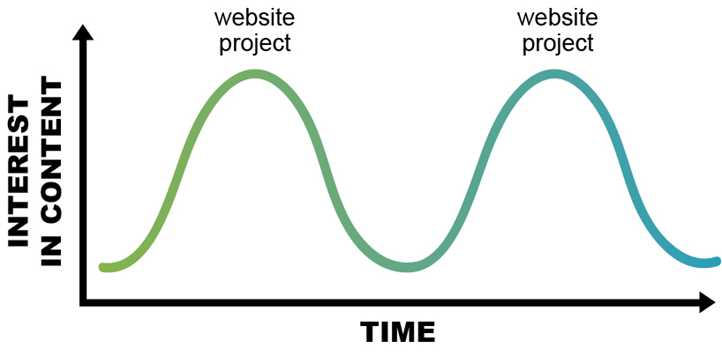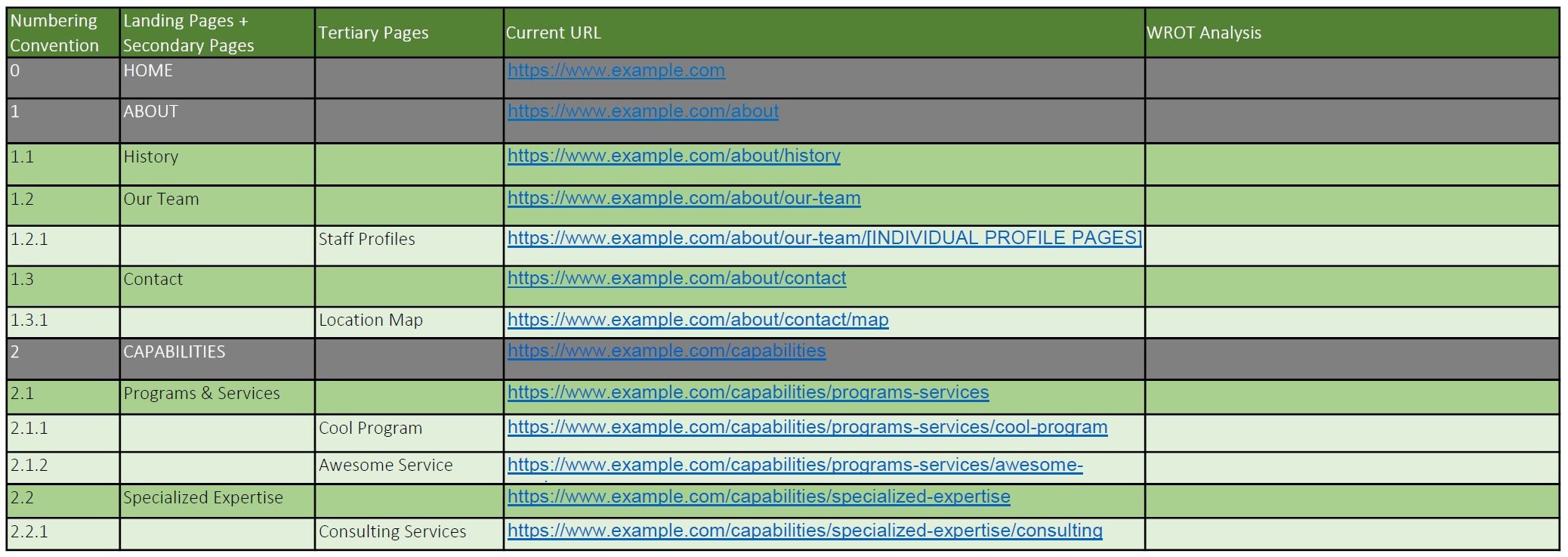Dear Kristen,
Our organization’s website suffers from “benign neglect”—we update content intermittently, on no particular schedule and with no plan for where the content should live in the site architecture. Basically, if someone in our organization thinks the information is important, it goes on the site. Our site now consists of hundreds of pages of unorganized content.
We’re planning a complete redesign of the website, including the content, with a Summer 2018 launch date. I’m the de facto writer/editor on our marketing team, so I’m responsible for creating all the site content. But do I really need to start over again from scratch? There must be some salvageable content on the current site—how do I figure out what stays and what goes?
I feel like I’m drowning in a sea of content and I haven’t even started yet. HELP!
Signed,
Discontented
Dear Discontented—
Your trepidation is completely understandable—and, if it makes you feel any better, your problem is not unique. Many of our website redesign clients come to us frustrated and overwhelmed by a current site that’s a morass of content that’s old, new, good, bad, extremely important, completely trivial, and everything in between.
The Risks of “Dump-and-Done”
Why do organizations find themselves in this conundrum? Because interest in content fluctuates according to organizational priorities, external and internal events, staff changes, resource availability and many other factors. As a result, the approach to content development and maintenance is often “dump-and-done”:

Source: GatherContent
Dump-and-done exposes your organization to all kinds of risks, including poor user experience, unsatisfied users, decreased credibility, missed business opportunities, embarrassment, and even financial and legal consequences. If nothing else, it pretty much guarantees that in two years or so, you’ll have a website that looks like the Land of Misfit Content.
How do you avoid this fate? With a Content Inventory and Audit.
The What and How of the Content Inventory & Audit
The Content Inventory and Audit is the opening salvo in the battle against dump-and-done. Knowing what state your content is in is the first step toward getting it to where you want it to be. It’s easy to dismiss your current content as mostly junk, but upon further examination you may find that there’s quite a bit that can be salvaged by editing it or reworking it. That’s good news—editing is usually faster and easier than rewriting. And even if your intention is to completely overhaul your site’s content, it’s always a good idea to first look at what you currently have to determine exactly where there may be gaps.
So, just what is this magical tool, and what makes it so important? Let’s break it down:
-
The Content Inventory is a list of all the current content on your website, including all the URLs/individual pages and assets (such as images, documents, and applications).
-
The Content Audit is an evaluation of the site’s current content, specifically to identify content that is weak, redundant, outdated, or trivial (WROT).
To create a Content Inventory & Audit, LMD uses a third-party tool to scan a website and generate a list of all of the site’s URLs. (There are lots of free and paid tools that can help you create content inventories. We typically use Xenu’s Link Sleuth; other tools include Screaming Frog, Trim, and XML-Sitemaps.) The tool captures all pages that use the site’s URL convention (e.g., www. XYZ. com/example/), including those that don’t exist within the site’s navigation—that is, pages that can only be found if someone receives a link to the page. These are called “orphan pages.” The tool also inventories pages that no longer exist (404 errors).
We then format the list into an Excel spreadsheet to create the inventory—here’s an example:


Once that’s done, we get down to the business of conducting the audit. Turning the raw data in the inventory into something useful requires reviewing each piece of content. LMD looks at every individual URL (i.e., every page) of the website and evaluates the content WROT. As we look at the content on each page, we ask:
-
What’s the purpose of this content?
-
Who is the intended audience?
-
Does it align with the client’s business objectives for the site?
-
Is the content accurate (for example, are statistics current)?
-
Is it on message?
-
Is there a clear call to action?
Based on the answers to these questions, we make recommendations for fact-checking, revising, eliminating, creating, moving and/or redirecting content. Once the Content Audit is complete, we send it back to the client with any questions we may have, as well as to get feedback and/or approval on our recommendations, before we start any other content-related tasks.
And Most Importantly—the Why
Does all this work sound painstaking and tedious? Unfortunately, yes. Is it necessary? Absolutely, yes!
A Content Inventory and Audit enables you to understand your content’s strengths and weaknesses. It helps you make decisions about what to keep, what to kill, and what to create more of to ensure that your site meets its business objectives. It’s also a critical exercise for identifying inconsistent content—that is, content that’s off-brand or off-message—because it forces you to evaluate your content against established standards and reveals where messages are being presented inconsistently.
Finally, and perhaps most importantly, a Content Inventory & Audit is the only way to truly know what you have so that you can make smart use of your existing content—which is key to reducing inefficiency and managing resources.
So, Discontented, I encourage you to get started on a Content Inventory & Audit for your website as soon as possible. With this crucial tool in hand, your content will go from chaos to control in no time.

